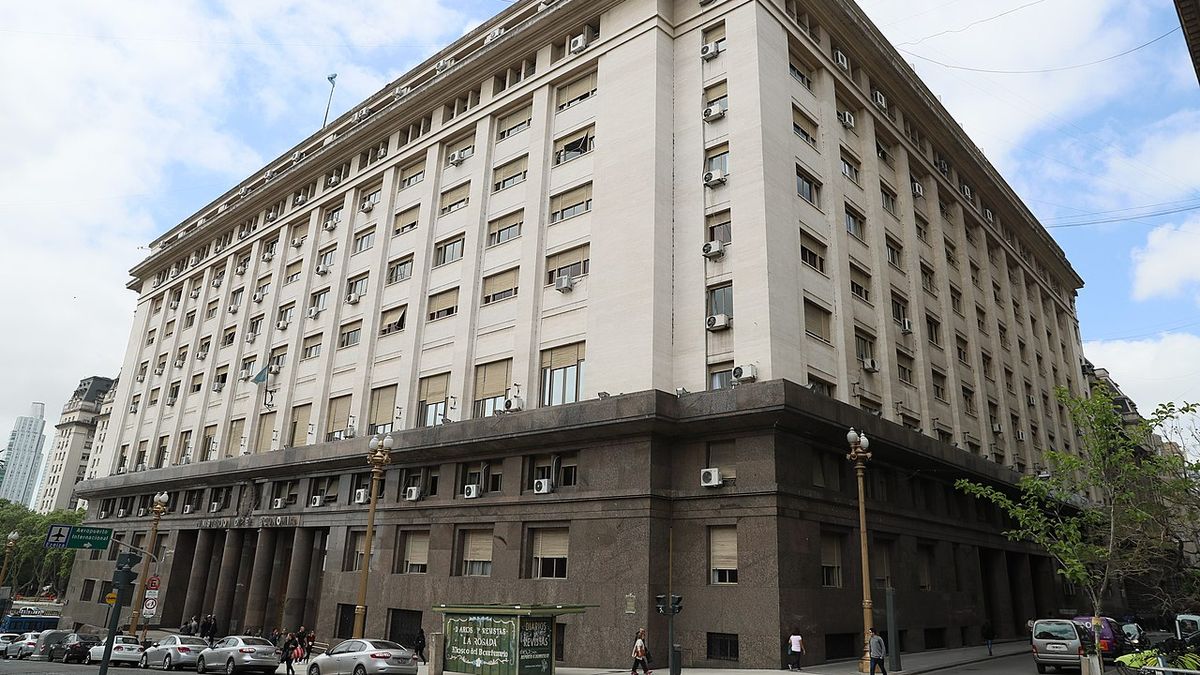In an atypical month due to the fact that a sharp reduction in tax resources, while there was an increase in spending on the payment of bonusesThe government reported that it had a surplus for the sixth consecutive month, which seeks to bring greater peace of mind to the markets by showing that the fiscal anchor remains firm.
“During June, the National Public Sector (SPN) registered a financial surplus of $238.189 billion, product of a surplus Primary expenditure of $488.569 million and net public debt interest on intra-public sector payments, which reached $250.38 billion,” the Ministry of Economy reported.
The minister of Economy, Luis Caputo, He highlighted on social media X: “June closed with a financial surplus of $238,189 million pesos. Sixth consecutive month.” “Financial surplus achieved by also attending to the most vulnerable. In 2023, fiscal deficit, monetary emission and brutal adjustment in pensions and AUH,” said the official.
The official report states that “The SPN recorded six consecutive months of financial surplus for the first time since 2008, accumulating a surplus after interest equivalent to approximately 0.4% of GDP in the year.” According to estimates by the Ministry of Finance, this implies a primary surplus of approximately 1.1% of GDP.
iaraf-gsto-junio.jpeg
“Thus The fiscal anchor of the government program continues to be consolidatedeven in a month that seasonally records higher expenses due to payments of the Annual Complementary Salary (SAC)”, says the report.
At the end of May, President Javier Milei had anticipated in public statements that in June, due to the effect of the SAC, there would be a primary deficit. Some analysts then consider thatand in order to maintain the financial surplus the government delayed payments, specifically to electricity generators.
The iTotal revenues for June amounted to $8.1 billion, a nominal increase of $216% year-on-yearTax revenues amounted to $7.6 billion; property income, $317.86 billion; other current income, $239.458 billion; and capital income, only $25 million.
As for the Primary expenditures reached $7.6 trillion with a nominal increase of 140%. Current expenditure totaled $7.4 trillion, including social benefits, $5.6 trillion; operating expenses, $1.2 trillion; and economic subsidies, $409,063 million, among others. According to official information, these expenses registered a nominal decrease of 4.2%.
He Official report states that “as regards Social Security benefits, they amounted to $4.2 billion (+207.5%), product of the impact of the mobility formula approved by Law No. 27,609 and DNU 274/24, which adapted the aforementioned formula so that retirement increases follow the evolution of inflation and granted an additional compensation of 12.5% for all liabilities under that regime, plus the impact of the payment of the Annual Complementary Salary (SAC) of retirees and pensioners.”
“If the reinforcement of pension income of up to $70,000 (more than $332,897 million) is added, The variation in national pension expenditure was 231.9%. On the other hand, salaries reached $1.03 billion (+201.7%) as a result of the increases granted within the framework of the agreed salary policies.”
The economists’ view
According to the Argentine Institute of Fiscal Analysis (IARAF), the Total revenue in June had a negative real year-on-year change of 15%. This is based on the fact that the Tax revenues fell by 12% and non-tax revenues fell by 40% in real terms.
On the side of the primary expenditure, which fell by 35% year-on-year in real terms. As a result, last year’s primary deficit turned into a primary surplus of $488 billion. Interest spending fell 30.4% in real terms compared to the same month last year. In effect, the fiscal deficit turned into a fiscal surplus of $238 billion.
During the first 6 months of the year, total revenues fell by 5% in real terms, while primary expenditure fell by 32% year-on-year in real terms.
As a result, the primary surplus amounts to $7 trillion, which would be equivalent to 1.1% of GDP. The fiscal-financial surplus amounts to $2.5 trillion, which would be equivalent to 0.4% of GDP.
During the same period in 2023, the fiscal result was negative by 1.7% of GDP. Given that deficit and this year’s surplus, the difference of 2.1 pp of GDP would imply fiscal savings so far this year.
Source: Ambito




